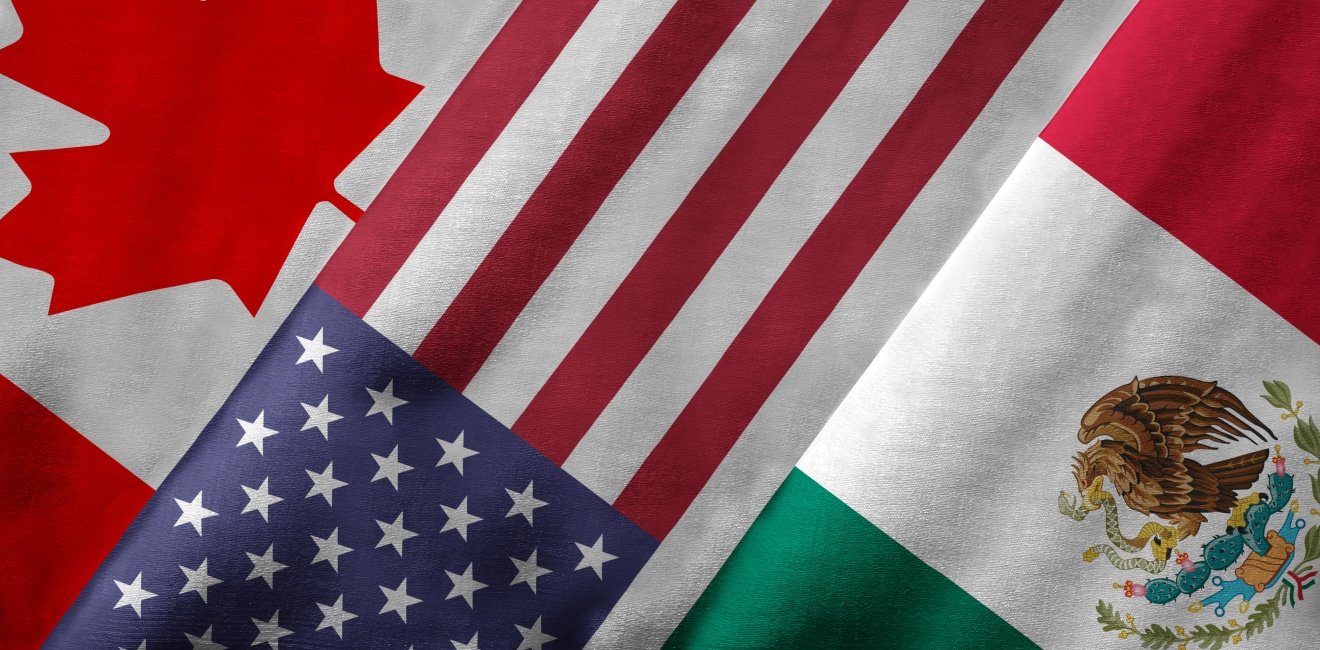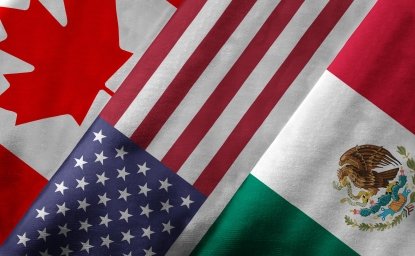After a year of tough negotiations, the United States and its neighbors may be nearing agreement on a revised North American Free Trade Agreement (NAFTA).
Progress in recent weeks between the U.S. and Mexico over the treatment of car manufacturing in a new NAFTA gives reason for hope. Mexico’s trade minister, foreign minister and the special representative of Mexico’s president-elect are back in Washington this week to continue talks.
There is an air of optimism among negotiators. The White House reportedly hopes to announce a U.S.-Mexico handshake on key issues Thursday.
Success on a new treaty is far from assured, however. Even with further U.S.-Mexico progress this week, Canada needs to review the results of bilateral U.S.-Mexico negotiations and then all three must turn to very difficult trilateral issues that still need to be resolved.
Canada is uncomfortable with the U.S. tactic of focusing on Mexico first in hope of creating pressure on Canada to be more flexible. Canada may well react negatively if cornered. The Mexicans and Canadians insist that NAFTA should remain a trilateral accord, despite U.S. arguments for breaking it into two bilateral deals.
Stakeholders in the $1.3 trillion North American market should keep pressing for progress. A renewed NAFTA is more important than ever as U.S.-China trade tensions rise.
A stronger, modernized NAFTA accord would bring new growth opportunities and predictability to relations with the United States’ two largest export markets and to the North American commercial marketplace that supports up to 14 million U.S. jobs and helps U.S. businesses compete more effectively with other global commercial powerhouses, like China.
Agreement in North America would importantly allow the U.S. to focus on China, which is by far the most egregious practitioner of “unfair” trade practices and the most potent commercial rival for the United States. The current trade truce with the European Union also bolsters that focus.
The window of opportunity to conclude the NAFTA agreement is very narrow if it is to get approved this year. For the U.S. administration to present an agreement to the current Republican-controlled Congress, it apparently needs an agreement in principle in the next few weeks.
The Mexicans would like to have the agreement completed before Mexico’s new president, Andres Manuel Lopez Obrador (AMLO), takes office on Dec. 1. Canada has a longer political timeframe: Prime Minister Justin Trudeau faces parliamentary elections on or before Oct. 21, 2019.
For Trump, AMLO and Trudeau, an agreement that each can present as a “win” for the home team can bring a political boost.
Agreements on the auto sector should help address President Trump's concern about trade deficits, for example, while Mexico’s president-elect would like to start his term in office with the North American market stable and encouraging for investment and growth in Mexico.
Any agreement will be scrutinized very carefully in Mexico and Canada, however, from the perspective of not being pushed around by their big neighbor. Prime Minister Trudeau, for example, got a boost in public opinion for his firm response to U.S. tariffs on Canadian metal exports.
Mexico and the United States made substantial progress over the past month. Negotiators hope to solidify agreements this week. The focus has been on the rules governing production of autos that would receive duty-free treatment under the new treaty.
The two sides are close to agreement on specific requirements for more North American content in autos. This includes commitments related to:
- covering specific types of auto parts (e.g. motors and transmissions);
- paying higher wages for a specific portion of the production process; and
- providing transition periods for automakers to meet the new conditions.
The negotiators are also working on how to deter auto production in North America that falls short of meeting the new requirements. New tariffs would be tricky since the U.S. is committed in the World Trade Organization to charge a maximum 2.5 percent tariff on imported autos.
These are very complex negotiations. They have great potential impact on the competitiveness of U.S. companies, auto manufactures from Asia and Europe who produce cars in North America and on the prices that consumers might have to pay for cars under the new rules.
Both U.S. and Mexican negotiators have been working with industry representatives, trying to find positions that will meet U.S. objectives to increase North American (and U.S. content), while keeping U.S. auto companies and the Mexican auto sector competitive at home and abroad.
The U.S. currently exports 2.4 million vehicles per year to trading partners. That is 22 percent of production. The negotiators need to take into account plant investments already made by non-U.S. auto companies in the United States and Mexico, as they would need to increase use of North American parts under the new rules.
The U.S. and Mexico are engaging on other issues, including treatment of seasonal Mexican agricultural exports (where there is progress), protections for investors (a priority for U.S. energy and other companies) and on assuring better labor rights in Mexico (a priority for U.S. unions).
The incoming Mexican government reportedly wants to rollback energy commitments already made in the negotiations, which could set off U.S. alarms if confirmed.
The next stage should be for Canada to return to the talks. President Trump has continued to criticize Canada over NAFTA. It is not clear how these tactics will work politically with Canada.
On the substance, Canada will review U.S.-Mexico agreements that affect their interests. The U.S. and Canada need to work through bilateral differences, for example, over Canada’s supports for dairy products and protection of intellectual property rights.
Very important trilateral issues still need to be resolved, including:
- opportunities to bid on government procurement (where the U.S. wants to set limits);
- resolving disputes regarding implementation among the governments and challenging certain trade actions (where the U.S. would like to eliminate the existing treaty chapters); and
- very importantly for Canada, Mexico and the private sector, the so-called “sunset clause” (where the U.S. proposes that after five years the treaty would automatically expire unless all three governments act to renew it).
The bottom line is that the U.S., Mexico and Canada are closing in on a new NAFTA agreement. Much work remains, however, and flexibility by all three is needed. It is worth an all-out effort.
This article was originally published on The Hill.






